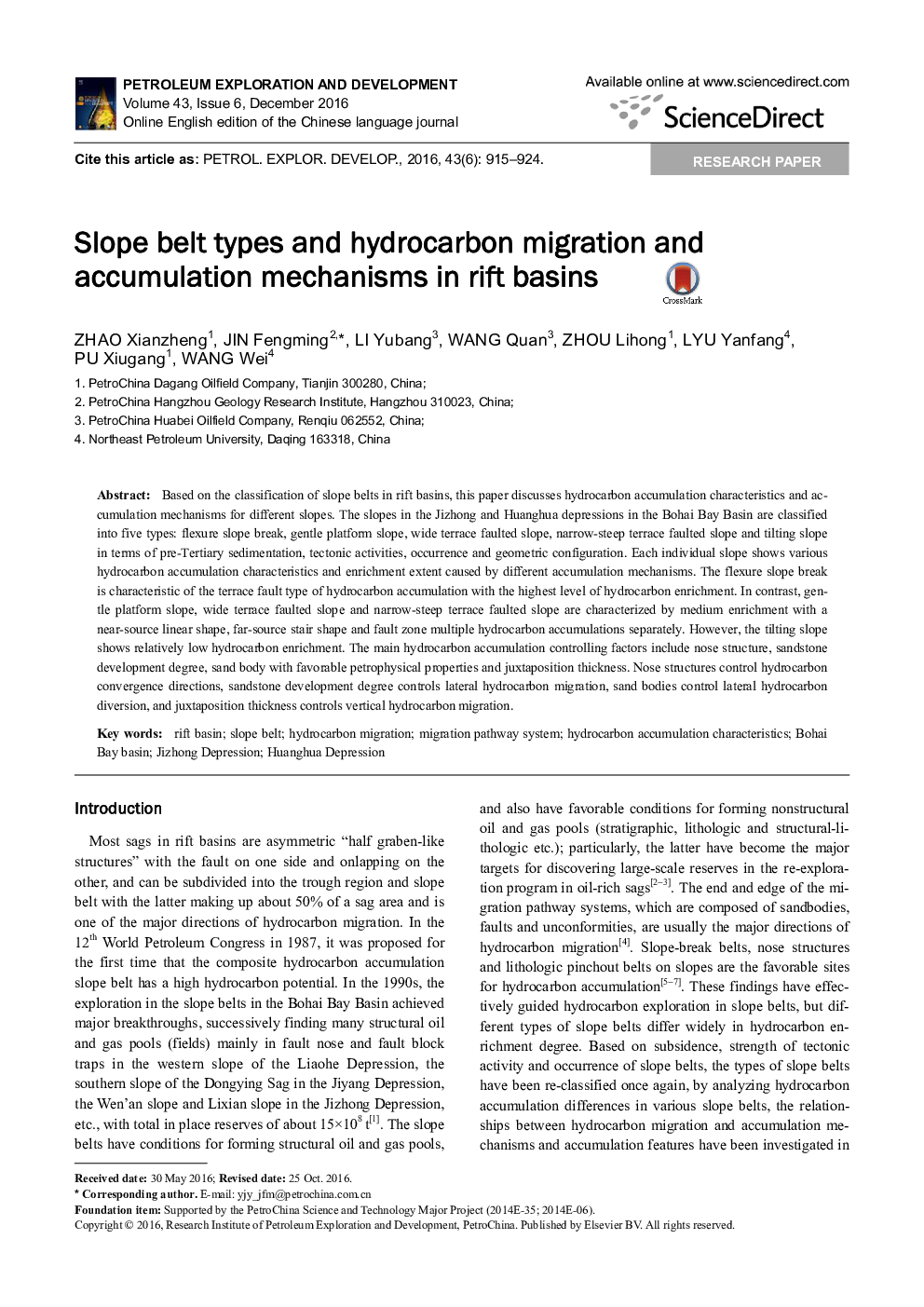| Article ID | Journal | Published Year | Pages | File Type |
|---|---|---|---|---|
| 8912305 | Petroleum Exploration and Development | 2016 | 10 Pages |
Abstract
Based on the classification of slope belts in rift basins, this paper discusses hydrocarbon accumulation characteristics and accumulation mechanisms for different slopes. The slopes in the Jizhong and Huanghua depressions in the Bohai Bay Basin are classified into five types: flexure slope break, gentle platform slope, wide terrace faulted slope, narrow-steep terrace faulted slope and tilting slope in terms of pre-Tertiary sedimentation, tectonic activities, occurrence and geometric configuration. Each individual slope shows various hydrocarbon accumulation characteristics and enrichment extent caused by different accumulation mechanisms. The flexure slope break is characteristic of the terrace fault type of hydrocarbon accumulation with the highest level of hydrocarbon enrichment. In contrast, gentle platform slope, wide terrace faulted slope and narrow-steep terrace faulted slope are characterized by medium enrichment with a near-source linear shape, far-source stair shape and fault zone multiple hydrocarbon accumulations separately. However, the tilting slope shows relatively low hydrocarbon enrichment. The main hydrocarbon accumulation controlling factors include nose structure, sandstone development degree, sand body with favorable petrophysical properties and juxtaposition thickness. Nose structures control hydrocarbon convergence directions, sandstone development degree controls lateral hydrocarbon migration, sand bodies control lateral hydrocarbon diversion, and juxtaposition thickness controls vertical hydrocarbon migration.
Related Topics
Physical Sciences and Engineering
Earth and Planetary Sciences
Geochemistry and Petrology
Authors
Xianzheng ZHAO, Fengming JIN, Yubang LI, Quan WANG, Lihong ZHOU, Yanfang LYU, Xiugang PU, Wei WANG,
